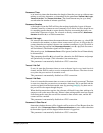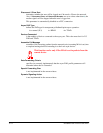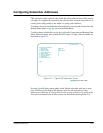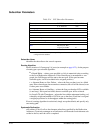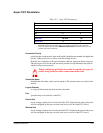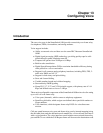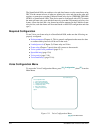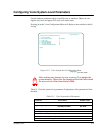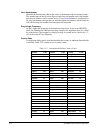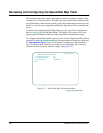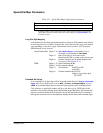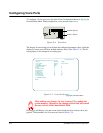
Chapter 13
Configuring Voice
Introduction
The two voice ports in the SmartSwitch 1800 provide connectivity over frame relay
for telephones, PBXs, fax machines, and analog modems.
Voice support includes:
●
Ability to transmit voice and data over the same DLCI between SmartSwitch
1800s
●
Digital signal processing (DSP) technology, providing quality equal to calls
placed through a public telephone network
●
Compression options from 4.8 Kbps to 64 Kbps
●
Built-in echo cancellation
●
Digital Speech Interpolation (DSI) to maximize bandwidth efficiency during
silent periods in a voice conversation
●
Support for all common analog telephony interfaces, including FXO, FXS, 2-
and 4-wire E&M, and AC-15
●
Support for both rotary and pulse dialing
●
Store and forward dialing
●
Variable number lengths and wildcard mapping
●
Start and delay E&M signaling
●
Group III, V.17, V.27, and V.29 facsimile support, with primary rate of 14.4
Kbps and fallback rates as low as 2.4 Kbps
Three major configurable components of the SmartSwitch 1800 are involved in setting
up a voice call over frame relay:
●
Voice ports (channels), which connect to telephony equipment.
●
Speed/long dial table, which assigns user-defined short speed-dial numbers to
longer numbers.
●
Voice interfaces, which designate frame relay DLCIs for voice/data trans-
mission.
Calls are routed between voice ports and frame relay ports by internal mapping (using
the dial table) that reads the destination node number for a voice call and associates it
with a voice interface. The voice interface record includes an associated frame relay
port and DLCI over which the Call Request frame will be sent to the destination node.



